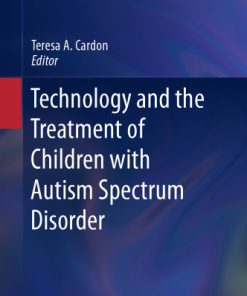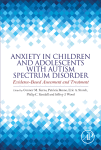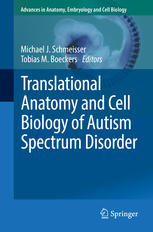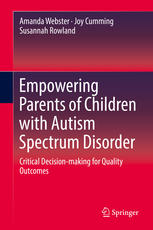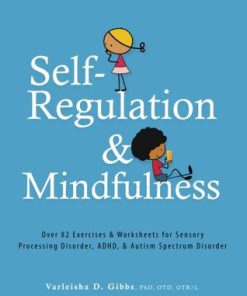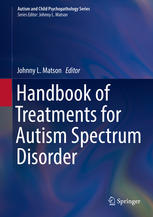Assessment of Autism Spectrum Disorder Critical Issues in Clinical Forensic and School Settings 1st Edition by Anna Kroncke, Marcy Willard, Helena Huckabee 3319255040 9783319255040
$50.00 Original price was: $50.00.$25.00Current price is: $25.00.
Assessment of Autism Spectrum Disorder Critical Issues in Clinical Forensic and School Settings 1st Edition by Anna P. Kroncke, Marcy Willard, Helena Huckabee – Ebook PDF Instant Download/DeliveryISBN: 3319255040, 9783319255040
Full download Assessment of Autism Spectrum Disorder Critical Issues in Clinical Forensic and School Settings 1st Edition after payment.
Product details:
ISBN-10 : 3319255040
ISBN-13 : 9783319255040
Author: Anna P. Kroncke, Marcy Willard, Helena Huckabee
Assessment of Autism Spectrum Disorder Critical Issues in Clinical Forensic and School Settings 1st Table of contents:
Part I: Understanding Autism
Chapter 1: What Is Autism? History and Foundations
What is Autism?
History and Foundations of ASD
Concluding Remarks on the History and Prevalence of Autism
Chapter 2: The Causes of Autism
Genetic Causes
Vaccines: Not a Cause of Autism
Genetic and Environment Interaction Effects
Inherited and Familial Factors
Epigenetics
Exposure to Toxins and Pesticides
Enzymes and Digestive Problems
Risk Factors for Autism
Early Identification Mitigates Autism Risk
Chapter 3: Optimal Outcomes and Recovery
Intelligence
Language Skills
Early Intervention
Adaptive Behaviors
Neurodiversity and Strength-Based ASD Models
Chapter 4: Autism in the DSM-5
Changes in Diagnostic Criteria: Pervasive Developmental Disorders to Autism Spectrum Disorder
Controversies Surrounding DSM-5
Indicating Cognitive or Language Impairments
Severity Scales for Social Communication and Restricted Repetitive Behaviors
A Word on Social (Pragmatic) Communication Disorder
A Need for More Research and for Continued Comprehensive Assessment
Summary of Part 1: Understanding Autism
Part II: Conducting an Evaluation
Chapter 5: Referral and Initial Consult
Making a Referral
How Referrals are Made
What Should Referring Professionals Know?
Being Responsive to Concerns
Finding an Appropriate Evaluation
Referring to Clinics Qualified in Diagnosing ASD
Elements of a Comprehensive Assessment
Multidisciplinary/Arena Evaluations
The Initial Consultation
Who Should Attend?
Conducting the Initial Consultation
Questions Asked During the Initial Consultation
Paperwork
Intake Packet
Next Steps: The Role of third-Party Payment (Insurance)
Choosing Initial Assessments
Dynamic Assessment Battery
Checklists of Measures by age of Client
Assessment Preparation
Chapter 6: Testing Begins
Testing Begins
Observations During the Assessment Process
Appearance
Behavioral Presentation
Language
Eye Contact and Gesture in Communication
Play/Interests
Social Reciprocity
Attention
Motor Skills
Mood and Affect
Naturalistic Observations
Cognitive Testing Observations
Facilitators–Inhibitors
Internal Facilitator–Inhibitors
Organic Integrity
Attention and Concentration
Personality Style
External Facilitator–Inhibitors
Clinic, Home, and Community Environmental Factors
Final Thoughts on Facilitators–Inhibitors
Challenging Behavior: Behavior Management during a Diagnostic Evaluation
Utilizing ABA Principles
Managing Antecedents
Sensory Sensitivities
Managing Consequences
Classical Conditioning
Visually Tracking Progress
Effective Reinforcement
Reinforcement Schedules
Premack Principle
Behavioral Momentum
Concluding Remarks on Observations and Behavior Management
Chapter 7: Comprehensive Evaluation
Referral
Assessing Core Areas
Cognitive
Language
Social
Sensory
Data Analysis
Autism Alone or Comorbid?
Assessing Additional Areas
Visual Spatial
Motor
Attention
Executive Functions
Memory
Emotional/Behavioral
Adaptive
Ruling Autism Out
Adequate Communication Skills
Appropriate Social and Communicative Reciprocity
Varied Interests
Diagnosing Disordered Social Interactions in the Absence of ASD
Push–Pull Interactions
Anxious Interactions
Disengaged or Blunted Interactions
Angry, Defiant, or Irritable Interactions
Concluding Remarks on Comprehensive Evaluations
Summary of Part 2: Conducting an Evaluation
Part III: Data Analysis
1.1 Data Analysis
Chapter 8: Cognitive and Language Assessment
Assessing for Cognition
Vignette #1 Derick: Cognitive Assessment of a Child with a Language Delay
Vignette #2 Clark: Cognitive Assessment of a Teenager with a Gifted Intellectual Profile
Cognitive Assessment as It Applies to Autism
Usefulness of FSIQ Scores in ASD
Cattell–Horn–Carroll Theory of Intelligence
Mullen Scales of Early Learning (MULLEN)
DAS-II
Stanford-Binet 5
Stanford-Binet Intelligence Scales, Fifth Edition (SB5)
WISC-V
Cognitive Assessment Using Q-Interactive Technology
Previous Versions of the WISC
Full Scale Intelligence Quotient or GAI
Verbal Comprehension
Lowest Verbal Comprehension Score: Comprehension
Perceptual Reasoning
Lowest Score on Perceptual Reasoning Index: Block Design
Working Memory
Lowest Score in Working Memory: Letter-Number Sequencing
Processing Speed
Lowest Score on Processing Speed Index: Coding
Stability of IQ Scores in ASD
Factors impacting IQ increase in ASD
Assessing for Language
Vignette #2 Sam: Language Assessment in a Gifted Child with Autism Spectrum
Language Assessment as It Applies to Autism: Expressive, Receptive, and Pragmatics
Ideational Fluency and Language
Language and Optimal Outcomes
Concluding Remarks on Assessment of Cognition and Language
Chapter 9: Social and Sensory Assessment
Assessing for Social and Core Autism Symptoms
Vignette #3 Alex: Autism Assessment in a Child with Social Interaction Challenges
Assessing the Core Symptoms of Autism
ADOS and ADI-R
Gold Standard Instruments
History and Development of the ADOS-2 and ADI-R
ADOS-2 Administration and Training Requirements
ADOS-2 Administering and Readministering the Test
ADOS-2 Modules
ADOS-2 T
Communication
Frequency of Spontaneous Vocalization Directed to Others
Pointing
Gestures
Reciprocal Social Interaction
Unusual Eye Contact
Facial Expression Directed to Others
Integration of Gaze and Other Behaviors During Social Overtures
Shared Enjoyment in Interaction
Response to Name
Ignore
Requesting
Showing
Spontaneous Initiation of Joint Attention
Response to Joint Attention
Quality of Social Overtures
Amount of Social Overtures Parent/Caregiver
Overall Quality of Rapport
Restricted and Repetitive Behavior
Intonation of Vocalizations or Verbalizations
Unusual Sensory Interest in Play Material or Person
Hand and Finger Movements/Posturing
Unusually Repetitive Interests or Stereotyped Behaviors
Obtains a Range of Concern Mild, Moderate, Severe
ADOS-2 Module 1
Reciprocal Social Interaction
Unusual Eye Contact
Facial Expression Directed to Others
Integration of Gaze and Other Behaviors during Social Overtures
Shared Enjoyment in Interaction
Showing
Spontaneous Initiation of Joint Attention
Response to Joint Attention
Quality of Social Overtures
Restricted and Repetitive Behavior
Intonation of Vocalizations or Verbalizations
ADOS-2 Score
ADOS-2 Module 2
Social Affect
Communication
Reciprocal Social Interaction
Unusual Eye Contact
Facial Expression Directed to Others
Shared Enjoyment in Interaction
Showing
Spontaneous Initiation of Joint Attention
Quality of Social Overtures
Amount of Reciprocal Social Communication
Overall Quality of Rapport
Restricted and Repetitive Behavior
ADOS-2 Score
ADOS-2 Module 3
Communication
Reporting of Events
Conversation
Descriptive, Conventional, Instrumental, or Informational Gestures
Reciprocal Social Interaction
Unusual Eye Contact
Facial Expression Directed to Examiner
Shared Enjoyment in Interaction
Quality of Social Overtures
Quality of Social Response
Amount of Reciprocal Social Communication
Restricted and Repetitive Behavior
ADOS-2 Score
ADOS-2 Module 4
Communication
Reciprocal Social Interaction
Unusual Eye Contact
Facial Expression Directed to Examiner
Comments on Another’s Emotions/Empathy
Responsibility
Imagination/Creativity
Stereotyped Behaviors and Restricted Interests
ADOS-2 Score
ADI-R Administration
Screening Instruments versus Instruments that Provide Definitive Diagnoses
Criterion Versus Normative Referenced Measures
Assessing for Sensory Processing
Assessment of a Child with Sensory Challenges
Sensory Processing Assessment as It Applies to Autism
Concluding Remarks on Assessment of Social and Sensory Areas
Chapter 10: Visual, Spatial, and Motor Assessment
Assessing for Visual-Spatial Skills
Vignette #5 Tom: Visual-Spatial Assessment in a Child with a Scattered Verbal/Nonverbal Profile
Visual-Spatial Assessment as It Applies to Autism
Assessing for Motor Skills
Vignette #6 Pablo: Fine and Gross Motor Assessment in a Child with Autism
Motor Skill Assessment as It Applies to Autism
Stereotyped Motor Behaviors
Concluding Remarks on the Assessment of Visual-Spatial and Motor Areas
Chapter 11: Attention, Executive Functions, and Memory Assessment
Assessing for Attention
Vignette #7 Madeline: Assessment of Focused, Sustained, and Shifting Attention in a Child with
Attention Assessment
Attention Assessment as It Applies to Autism
Alerting Network
Attention Recommendations
Orienting Network
Shifting Attention
Recommendations for Shifting Attention
Executive Control Network
Assessing for Executive Functioning
Vignette #8 DeShawn: Executive Functioning Assessment in an Adult with Romantic Relationship Chal
Executive Functioning Assessment as It Applies to Autism
Foundations and Assessment of Executive Functioning
Inhibition
Planning
Flexibility
Working Memory
Assessing for Memory
Vignette #8 Kimmy: Memory Assessment in an Adult Enrolling in College Courses
Memory Assessment as It Applies to Autism
Memory Taxonomy and ASD
Individuals with ASD and ID
Individuals with ASD and IQ Over 70
Concluding Remarks on Attention, Executive Functions, and Memory in ASD
Chapter 12: Emotions, Mood, Behavior, and Adaptive Assessment
Assessing for Emotional and Behavioral Symptoms
Vignette #9: Adam
Emotional and Behavioral Assessment as It Applies to Autism
Mood and Anxiety
Behavior Assessment
Assessing for Adaptive Skills
Vignette #10: Mary Assessment of a Child with Adaptive Skill Deficits
Adaptive Skill Assessment as It Applies to Autism
Concluding Remarks on Emotions, Mood, Behavior, and Adaptive Assessment
Summary of Part 3: Data Analysis
Part IV: Differential Diagnosis
1.1 Differential Diagnosis
Chapter 13: Disorders of Neurodevelopment and Brain Functioning
Intellectual Disabilities and Exceptional Intellectual Profiles
Differentiating Between ASD and an Intellectual Disability
Differentiating ASD and Giftedness
Comorbid ASD and Intellectual Disability
Comorbid ASD and Giftedness
An Environmental Impact on Cognitive Abilities: Fetal Alcohol Syndrome
Genetic Disorders
Down Syndrome
Turner Syndrome
Rett Syndrome
Williams Syndrome
Fragile X
Specific Learning Disorders
Comorbid ASD and Specific Learning Disorders
Dyslexia
Dyscalculia
Dysgraphia
Developmental Coordination Disorder
Language Disorders
Differentiating Between ASD and a Language Disorder
Differential Diagnosis of Social (pragmatic) Communication Disorder and ASD
ASD (not SCD)
Comorbid ASD and Language Disorders
Attention Disorders
Differentiating Between ASD and AD/HD
Comorbid ASD and AD/HD
Differential and Comorbid Diagnosis of AD/HD and ASD
Concluding Remarks on Disorders of Neurodevelopment and Brain Functioning
Chapter 14: Disorders of Emotion, Mood, and Behavior
Anxiety Disorders and OCD
Differentiating Between ASD and Anxiety Disorders
Comorbid ASD and Anxiety Disorders
Mood Disorders
Differentiating Between ASD and Mood Disorders
Comorbid ASD and Mood Disorders
Psychotic Disorders
Differentiating Between ASD and Psychotic Disorders
Comorbid ASD and Psychotic Disorders
Behavior Disorders
Differentiating Between ASD and Behavior Disorders
Comorbid ASD and Behavior Disorders
Trauma-Related Disorders: Posttraumatic Stress Disorder and Adjustment Disorders
Differentiating Between ASD and Trauma-Related Disorders
Comorbid ASD and Trauma-Related Disorders
Attachment Disorders
Differentiating Between ASD and Attachment Disorders
Comorbid ASD and Attachment Disorders
Differential and Comorbid Diagnosis of Attachment Disorders and ASD in toddlers
Personality Disorders
Differentiating Between ASD and Personality Disorders
Comorbid ASD and Personality Disorders
Other Relevant Comorbidities for Clinical Attention
Summary of Part IV: Differential and Comorbid Diagnosis
Part V: Concluding the Assessment Process
Chapter 15: Feedback, Report, and Recommendations
Feedback and Report
Further Evaluations
Neurology
Psychiatry
Applied Behavior Analyst
Nutrition and/or Feeding therapy
Metabolic Specialist
Occupational Therapy
School Recommendations
Class Placement
Applied Behavior Analysis
Sample ABA Recommendation for School
Speech Therapy
Occupational Therapy
Physical Therapy
Psychological Services
Tutoring/Targeted Intervention
Accommodations and Modifications
Recommendations for Home and Community
Core ASD Characteristics
Interventions for Autism Spectrum Disorder
Applied Behavior Analysis
Speech Language Therapy
Occupational Therapy
Psychotherapy
Group Interventions
Recreation
Book and Internet References for Autism Spectrum Disorders
Thoughts on the Report
Sample Recommendations for ASD by Age Diagnosis
Concluding Remarks on the Feedback, Report, and Recommendations
Chapter 16: Case Examples from Referral to Recommendation
Assessing a Toddler with Mood Swings and Self-Injurious Behavior
Referral Question and Background Information
Testing Observations
Assessments Administered
Mullen Scales of Early Learning
Autism Diagnostic Observation Schedule, Second Edition: Toddler Module
Test Results and Conclusions
Autism Diagnostic Observation Schedule: Toddler Module
Recommendations
Assessing an Adult to Rule out Autism Spectrum and Mood Disorders
Referral Question and Background Information
Testing Observations
Assessments Administered
Wechsler Adult Intelligence Scale, Fourth Edition
Autism Diagnostic Observation Schedule, Second Edition: Module 4
Emotional Assessment
Diagnostic Impressions
Recommendations
Assessing a Bright but Rigid Socially Motivated 10-Year-Old to Rule out Autism Spectrum and Lo
Referral Question and Background Information
Testing Observations
Assessments Administered
Wechsler Intelligence Scale for Children, Fourth Edition
Autism Diagnostic Observation Schedule, Second Edition: Module 3
Emotional Assessment
Diagnostic Impressions
Recommendations
Summary of Part 5: Concluding the Assessment Process
Part VI: Assessment in Applied Settings and Special Testing Considerations
Chapter 17: Forensic Assessment for Autism Spectrum Disorder
Forensic Evaluations
Forensic Consultation
Expert Testimony
Family Law
Administrative Law
Disputes Involving Appropriate School Services
Disputes Involving Accessing Funds
Civil Law
Criminal Law
Core Characteristics
Case Studies: Family, Administration, Civil, and Criminal
Chapter 18: School-Based Assessment
School: The First Frontier
Legal Requirement for School-Based Teams
IDEA
ECEA
Child Find
Removing the Fog for School-Based Professionals
Tiered Systems of Support: Implications for Students with ASD
Alphabet Soup: What Are RtI, MTSS, PBIS, FSP?
Supporting Students with ASD Within MTSS
Best Practice for Assessment Training
A Description of the Best-Practice Approach for ASD Screening and Identification
Phase 1: Universal Screening and Intervention
Tier 1: Universal Interventions
Screen, Identify, and Refer
Screening Observation Tools
Phase 2: Evidence-Based Interventions
Tier 2 Interventions
Tier 3 Interventions
Progress Monitor
Closing the Gap
Determine If Interventions Are Successful
Obtain Consent for Evaluation
Obtain Consent for Evaluation
Notice of Meeting
Phase 3: Comprehensive Evaluation
Interviews
Parent Interview
Child Interview
Teacher Interview
Teacher Interview Questions
Observations
Formal Observations
Tests
Formal Assessments
Communication
Behavior
Social and Adaptive
Cognitive
Autism-Specific
Academic
Collaborate with IEP Team and Discuss Findings
Phase 4: Eligibility Determination
Child Meets Eligibility
Child Does Not Meet Eligibility
Comprehensive Information about Data Analysis during School Evaluations
Detailed Description of School-Based Assessment Data That May Indicate ASD
Formal Assessment Types
Informal Assessment Types
Cognitive
Using IQ Test Data to Conduct a School-Based ASD Evaluation
Social/Emotional
Academic
Signs and Symptoms of ASD Using the WIAT-III
Reading Tests
Concluding Remarks on School-Based Assessment
Chapter 19: School, Parent, and Community Partnerships
Wraparound and Collaboration between School and Community Providers
Collaboration and Partnership with Families
Collaboration and Partnership with Community Agencies
Guiding Questions for a Referral to Outside Providers
A Word on Parental Advocacy
More on Family Rights and Roles
Concluding Remarks on Family–School Partnerships
Case Study (Willard, 2012)
Section 1: Identification
Referral
Background
Baseline
Section 2: Analysis
Hypotheses
Goals
Section 3: Intervention
Intervention Selection & Description
Intervention Delivery
Intervention Fidelity
Section 4: Evaluation
Summary of Results
Overall Conclusions
Legal Terms in School-Based Assessment
Chapter 20: Assessment Across the Lifespan
Implications for Assessing Toddlers
Early Identification Can Lead to Optimal Outcomes
Setting up for Success in the Assessment of Toddlers
Assessing Toddlers with the ADOS-2 Toddler
Parent Role During Administration of ADOS-2 Toddler
Testing Day: Administering the ADOS-2 Toddler
Assessing Reciprocal Play During the ADOS-2 Toddler
Concerning Play Behaviors
Pro-Social Reciprocal Play
Diagnosing a Toddler with ASD
Implications for Assessing Adults
Identifying the Need for Assessment in Adults Suspected of Having ASD
Assessing Adults: Testing Day
Age of Diagnosis and the Impact on the Individual
Age of First Concern to Diagnosis
The 2–3 Year Gap from First Concern to Diagnosis: What Is the Impact?
Diagnosis Across the Lifespan and the Impact on Families
Toddlers
Children
What Should a School-Aged Child Know About His or Her Diagnosis
Adolescents
How to Conduct a Feedback with an Adolescent
Adolescence: Sexuality
Adolescence: Diagnosis in the Family
Adults
Adults: Marrying Someone with an Autism Spectrum Disorder. What Does Diagnosis Mean?
Incidence Within the Family: What Does Diagnosis Mean?
Lifespan and Death: What Is Life Expectancy?
Concluding Remarks on Assessment Across the Lifespan
Summary of Part VI: Assessment in Applied Settings and Special Testing Considerations
Vignettes: Assessing Adults
Background
Assessments
Appendix: Measures and Psychometrics
Other Measures Used in Comprehensive Neuropsychological and Psychological Assessment: Psychometric
Cognitive Measures and Their Administration
Toddlers and Young Children
Mullen Scales of Early Learning
Differential Ability Scales: Second Edition Upper and Lower Early Years Battery
School-Aged Children and Adults
Wechsler Intelligence Scale for Children: Fourth Edition
Differential Ability Scales: Second Edition School-Age Battery
Wechsler Adult Intelligence Scale: Fourth Edition
Conclusions
Assessing Language to Provide Diagnostic Information
Clinical Evaluation of Language Fundamentals: Fourth Edition
Controlled Oral Word Association Test
Expressive One-Word Picture Vocabulary Test: Fourth Edition
Peabody Picture Vocabulary Test: Fourth Edition
Test of Pragmatic Language
Social Communication Questionnaire
Wepman’s Auditory Discrimination Test: Second Edition
Adaptive Skills
Vineland Adaptive Behavior Scales: Second Edition
Scales of Independent Behavior: Revised
Assessment of Emotional Functioning
Children’s Depression Inventory: Second Edition (CDI-2)
Revised Children’s Manifest Anxiety Scale: Second Edition
Behavior Assessment System for Children: Second Edition
Beck Depression Inventory: Second Edition
Beck Anxiety Inventory
Minnesota Multiphasic Personality Inventory, Second Edition, and Adolescent Edition
Roberts: Second Edition
Attention
Test of Variables of Attention
Executive Function
Tower of London: Second Edition
Wisconsin Card Sorting Test: Revised and Expanded
Stroop Color and Word Test: Adult Version
Comprehensive Trail-Making Test
Visual and Motor Skills
Beery–Buktenica Developmental Tests of Visual-Motor Integration, Visual Perception, and Motor Co
Motor-Free Visual Perception Test: Third Edition
Grooved Pegboard Test
Sensory Processing
Sensory Profile
Memory
Wechsler Memory Scale: Fourth Edition
Rey–Osterrieth Complex Figure Test and Recognition Trial
Rey Auditory Verbal Learning Test
Test of Memory and Learning
Academic Achievement
Woodcock–Johnson Test of Achievement: Third Edition Normative Update
Gray Oral Reading Tests: Fifth Edition
Wechsler Individual Achievement Test: Third Edition
Additional Measures for Comprehensive Assessment of Autism Spectrum Disorders Not Reviewed Sp
People also search for Assessment of Autism Spectrum Disorder Critical Issues in Clinical Forensic and School Settings 1st :
Tags: Assessment, Autism Spectrum, Critical Issues, Clinical Forensic, School Settings, Anna Kroncke, Marcy Willard, Helena Huckabee
You may also like…
Medicine - Clinical Medicine
Relationships & Lifestyle - Diet & Nutrition
Technology and the Treatment of Children with Autism Spectrum Disorder Cardon
Politics & Philosophy - Social Sciences
Medicine
Translational Anatomy and Cell Biology of Autism Spectrum Disorder 1st Edition Michael J. Schmeisser
Relationships & Lifestyle - Diet & Nutrition
Relationships & Lifestyle - Health - Diseases & Disorders
Politics & Philosophy - Social Sciences







